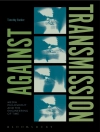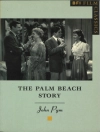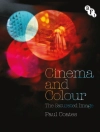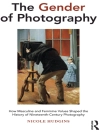This e-book is part of a twelve-volume series documenting the history of German film from its beginnings in 1895 to the present day using the collection holdings of the Deutsche Kinemathek. Each volume in e PUB format focuses on a decade and offers a concise overview of the cinematic masterpieces and milestones of that era, highlights famous films and films to be rediscovered, and pays tribute to the cinema, its audience and the creative minds behind the diversity of German film.
The complete work, which comprises over 2, 700 objects from all areas of the collection and spans 130 years, is also available as a printed book and as a PDF in German and English.
The DEUTSCHE KINEMATHEK is one of the world’s leading institutions for the collection, preservation, and presentation of audio-visual heritage. Hundreds of thousands of objects are permanently preserved in its archives and are available for research into film and television history. In addition to scripts, photos, posters, costumes and designs, the collection also includes film equipment. The Kinemathek curates film series and exhibitions and restores and digitizes films. Its diverse activities, including installations, publications, educational formats, and conferences, encourage visitors to discover the world of moving images.
Содержание
Cover
Contents
Introduction
The First Sound Films
Der blaue Engel: Marlene Dietrich’s Path to Stardom
Sports and the Cult of the Body
Film Restoration (III/IV): Early Sound Films
Fritz Lang’s Serial Killer Film M
Innovations at the Babelsberg Studio
New Objectivity in Berlin
Images of France
Cinema’s Struggle against Repressive Sexual Morality
Women Film Professionals in the 1930s: The End of a Development
Short Sound Films of the 1930s
The Sound Film Operetta
Brigitte Helm: A Starlet and Her Fans
Die Dreigroschenoper by Brecht and Weill as a Film
Collective Films
Still Photography in the 1930s
Ufa Sound Films up to 1933
Embattled Memory: The First World War in Film
Similarities between Two Stars: Hans Albers and Heinz Rühmann
Prussian Films with a Nationalist Perspective
Variants of the Mountain Film
Star Postcards from the 1930s
Cultural Breach: On the Way to Nazi Film
Film Journalism under the Influence of National Socialism
Traces of Weimar Cinema
The Graphic Designer and Film Director Peter Pewas
Designs for the Future and Zeitgeist
Das Testament des Dr. Mabuse by Fritz Lang and Thea von Harbou
Film Professionals in Exile (I/IV)
Film Professionals in Exile (II/IV)
Film Professionals in Exile (III/IV)
Film Professionals in Exile (IV/IV)
Glorification of the Nazi Kampfzeit
Anti-Semitism in Nazi Films through 1939
The European Film Fund
Berlin and Babelsberg as Centers of Film Archiving and Education
The Actor Heinrich George
Riefenstahl and the Nazi Party Rallies, 1933–1935
The Film Composer Herbert Windt
Places of Longing: Five Comedies
The International Aspect of Nazi Film Policy
Actresses under National Socialism: Careers between Adaptation and Resistance
Nazi Versions of Prussian History
Queens of American Cinema
‘Exotic’ Stars in Nazi Cinema
Camera Equipment: Franz Weihmayr’s Five Cases
Frank Wysbar’s Fährmann Maria
Film Aesthetics and Industry in the Nazi Era
Geyer-Werke in the 1930s
The Early Peak of Home Cinema
Loyal to the Party Line: Veit Harlan’s Der Herrscher
A Flagship Product: Urlaub auf Ehrenwort
Women’s and Men’s Apartment Shares
Colonial Melodramas
The Writer Jochen Huth
The Accompanying Program in the Cinema
Soldiers’ Cinemas during the Second World War












